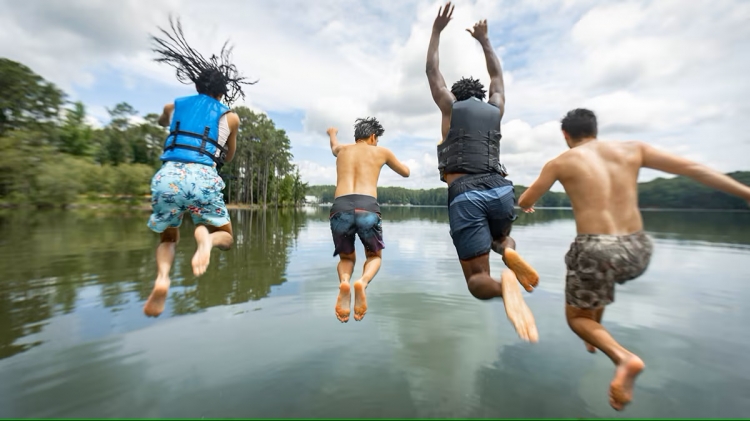Summer swim safety
Centers for Disease Control and Prevention (CDC)
Drowning is preventable. To avoid drowning, learn how to swim, teach children how to swim, supervise children closely and constantly when they are in or near water, properly fence home swimming pools, and wear a properly fitted life jacket in and around water.
Leading cause of death
Drowning is a leading cause of death for children. Keeping children safe in and around water allows everyone to enjoy summer water activities. Drowning is the leading cause of death for children 1 to 4 years old, and the second leading cause of unintentional injury death for children 5 to 14 years old. Drowning can happen in seconds and is often silent. It can happen to anyone, any time there is access to water. This includes pools and lakes, and also smaller water bodies, like bathtubs and water-filled buckets.
Water safety
Swimming lessons can reduce the risk of drowning, but over half of U.S. adults have never taken a swimming lesson. Consider enrolling children in swimming lessons. And consider swim lessons for yourself to improve your swimming skills and comfort in the water. It’s never too late to learn to swim, and the benefits increase as we age.
Keep in mind that children who have had swimming lessons still need close and constant supervision when in or around water, even when a lifeguard is present. An adult should always be within an arm’s length from a child who is in or near water. When supervising children, a responsible adult should avoid distracting activities like reading, using the phone, and consuming alcohol or drugs, because drowning happens quickly and quietly.
Even non-fatal drowning can result in long-term health problems and costly hospital stays. Drowning injuries can cause brain damage and other serious outcomes, including long-term disability. For every child under age 18 who dies from drowning, another 7 receive emergency department care for non-fatal drowning. Nearly 40% of drownings treated in emergency departments require a hospital stay or transfer to a facility for further care. This is 3 times higher than the number of other unintentional injuries that require follow-up care.
Pools and natural water
Home swimming pools need a four-sided fence, at least four feet high, that fully encloses the pool and separates it from the house. The fence needs a self-closing and self-latching gate. All toys that might attract a child need to be removed from the pool when no one is using it.
“Floaties,” arm bands, or water wings do not prevent children from drowning and can easily slip off, especially when kids jump into the water. Water wings can produce a false sense of safety for parents and children. A U.S. Coast Guard-approved life jacket is more protective.
About 40% of drowning deaths among children ages 5 to 14 occur in natural water. More than half of fatal and non-fatal drownings among people 15 years and older occur in natural or open waters, like lakes, rivers, or oceans. Wearing properly fitted life jackets can be beneficial for many activities in and around natural water, not just boating. When in or around open or natural water — whether in a boat or in the water — children and adults are best protected by wearing U.S. Coast Guard-approved life jackets that are well-fitted to their size and fully fastened. Approximately 85% of people who drowned while boating in 2022 were not wearing a life jacket.
